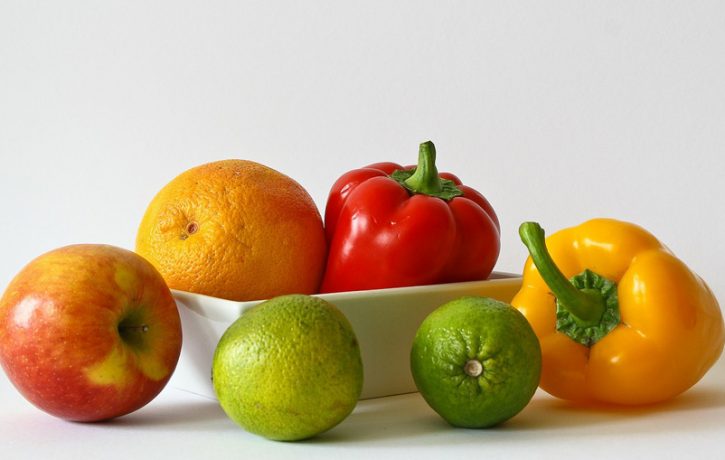in Nutrition
Easy Ways to Get Your 7-a-day

Yes, you read that right. “5-a-day” is not enough, and most of us need to step up our consumption of fresh fruit and vegetables, so 7 servings (about 80 g each) are getting us closer to the amount of nutrients we need. The British Association for Applied Nutrition and Nutritional Therapy (BANT) therefore advises to eat 7-a-day.
A government survey in 2014 found that the majority of people in the UK are not eating enough fruit and vegetables. The highest consumption of fruit and veg was found in the East of England, but even here it was only 13% of the population who covered their 5-a-day. There were also variations between people of different ages, and the older people were, the higher their consumption of fruit and veg. 6% of respondents nationally said that they did not consume any fruit and vegetables at all.
You are welcome to eat more than your 7-a-day, more veg at least: There is no limit to the amount of vegetables you can eat. Fruit, on the other hand, should be limited to no more than three palm-sized portions per day, two if you are trying to lose weight. This is due to the high sugar content of fruit. Fruit that would grow in the UK – apples, pears, berries, plums and cherries – is lower in sugar than tropical fruit.
Eat a rainbow every day! Different coloured fruit and vegetables contain different plant nutrients, so buy all the different colours to maximise the nutritional value you are getting.
What counts?
All fresh and unprocessed fruit and veg – except the below.
Tinned and frozen fruit and veg – so long as they do not contain added sugar or salt
Beans and pulses – but not matter how much of those you eat, they will only count as one of your 7-a-day.
Jars of tomato passata – but not ready made pasta sauce.
What doesn’t count?
Potatoes, yams, cassava and plantain – although they are a vegetables, they are so rich in starch that we count them as a ‘starchy carbohydrate’.
Fruit juices – due to their high sugar content.
Baked beans – they are pulses, but the tomato sauce is generally processed and full of sugar or artificial sweeteners.
Onion rings – unless of course you made them yourself, from fresh onions, and limit the salt.
Ketchup – processed and full of sugar
“Salad” in your sandwich – it is unlikely to make up one 80 g portion
Vegetable crisps
Fruit yoghurts – they often do not even contain fruit, and they will never contain an 80-g serving.
Fruit desserts – unfortunately the sugar in the dessert, which is also likely to contain less than 80 g of fruit, makes it unsuitable.
7 Tips on How to Eat a Rainbow:
- Snack on crudités (e. g. sticks of carrot, pepper, celery or cucumber) and hummus instead of crisps or cereal bars.
- Keep a bag of chopped frozen vegetables in your freezer, so that you’ll always have some. They can easily be made into a soup or steamed to accompany your dinner.
- Keep fruits and vegetables where you can see them – have a little bowl or plate on your desk with your two fruit servings/day.
- Roast a tray of chopped vegetables every week and keep them in the fridge. You can add them to soups, salads, pasta shapes, stuffed pita or top a homemade pizza with them. Suitable vegetables are, for example, beetroot, carrots, courgettes, peppers, onions.
- Have a salad alongside your sandwich for lunch.
- When eating out, always order a vegetable side dish or side salad, even if your main comes with vegetables.
- Try something new every week. Have a look around the options at the supermarket. Most of us tend to buy the same things. Why not be adventurous and try something you’ve never tasted before? Better still: Order a weekly vegetable box. It’ll sometimes contain unusual vegetables that you wouldn’t see in the supermarket.
- Finding Hope and Comfort Through Pain - 21st March 2025
- Non-Pharmacological Solutions for Managing Pain in Parkinson’s - 19th February 2025
- The Healing Touch: How Massage Benefits People with Spinal Injury Pain - 28th January 2025
